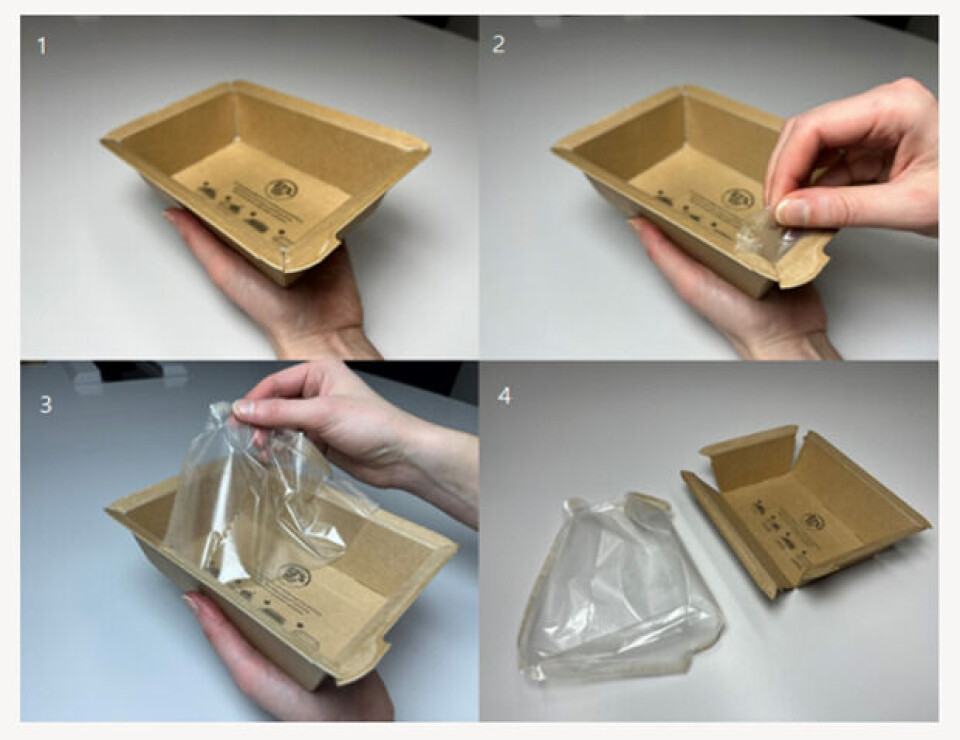THIS CONTENT IS BROUGHT TO YOU BY Nofima The Norwegian Institute of Food, Fisheries and Aquaculture Research - read more
Consumers are less likely to recycle if they need to separate the packaging materials
Have you ever stood there with empty food packaging and wondered how you're actually supposed to sort it for recycling? You're not alone.

People often sort their waste to contribute to a better environment. The task isn't always easy when the packaging is made from several different materials.
Packaging ensures durable, safe, and appetising food.
What happens if the packaging changes? Will consumers still buy the same product packaged in a more sustainable material – which also requires a bit of effort to separate?
This is what the researchers in the ReFiberPack project wanted to find out.
“We want to learn more about Norwegian consumers’ attitudes and habits regarding source separation, food packaging, and acceptance of new packaging solutions,” says Mads Erling Pedersen, a senior engineer at Nofima.
A nationwide survey showed a positive change in attitudes towards waste sorting over the last 25 years.

People want to consider the environment. We appreciate being able to contribute by making an effort at home.
Positive, but not to everything
Participants said that food safety was the most important aspect of food packaging. Then comes shelf life and environmental friendliness.
Most were positive towards new types of food packaging that may be better for the environment.
Environmental considerations and waste sorting were important to the participants. Nevertheless, they were sceptical of new packaging that required an effort to separate plastic from cardboard before sorting.
Different packaging solutions
Participants were also asked about various packaging solutions based on combinations of cardboard and plastic materials, with or without recycled content.
Each solution was rated on a scale from one to seven according to the following criteria:
- Likelihood that the packaging would be sorted for recycling
- User-friendliness
- Environmental friendliness
- Food safety
- Shelf life
- Sensory quality (how the food is perceived with the senses, such as taste, smell, texture, and appearance)

People don't want extra work
The results are clear: If recycling requires extra work, such as separating different materials in the packaging, it's more likely that consumers will choose not to recycle.
“In the project, we're also working on solutions where the industry can manage the necessary separation for material recycling. Consumers were much more positive towards such industrial solutions,” says Valérie Lengard Almli, a senior scientist at Nofima.
Participants said that packaging made of fibre-based material with less plastic is better for the environment. They also perceived such packaging to be be worse for food safety, shelf life, and sensory quality (taste, smell, and appearance).
Counteracting scepticism
“The results are not what we had hoped for, but this is vital information for both packaging and food producers,” says Almli.
Food producers have in any case received new regulations that require changes. They are required to use environmentally friendly and recyclable packaging solutions.
When consumers discover that the new solutions are just as safe and effective as the old ones, trust will follow, Almli believes.
The researchers will now further investigate how best to reduce scepticism and motivate more people to engage in source separation.
———
Read the Norwegian version of this article on forskning.no

This content is paid for and presented by Nofima The Norwegian Institute of Food, Fisheries and Aquaculture Research
This content is created by Nofima's communication staff, who use this platform to communicate science and share results from research with the public. Nofima is one of more than 80 owners of ScienceNorway.no. Read more here.
More content from Nofima:
-
Red algae grown in wastewater from fish-farming facilities could become sustainable salmon feed
-
Pumpkins are good for more than just Halloween decorations
-
This is how temperature affects a salmon's health and growth
-
Study: Omega-3 and zinc is a powerful duo for salmon
-
Fish may turn yellow if frozen too fresh
-
Is it better if food is packaged in plastic or paperboard?





































